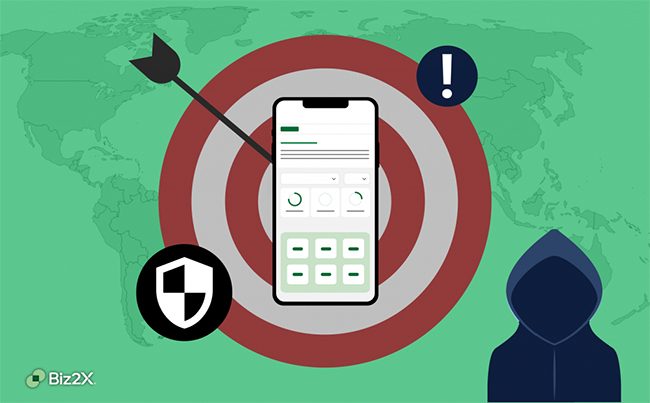For small and community banks, a comprehensive portfolio monitoring tool is not just a convenience; it's a necessity, especially as it pertains to business lending where risk factors are multifaceted and dynamic.
The Risks of Inadequate Monitoring
- Credit Risk Amplification: Without real-time monitoring, banks may miss early warning signs of credit deterioration. This delay can lead to an increase in non-performing assets and higher default rates, significantly impacting a bank's financial stability, profitability, and reputation.
- Regulatory Non-Compliance: Regulatory frameworks in the banking sector are stringent and change regularly. Inadequate monitoring can result in non-compliance, leading to legal repercussions and penalties.
- Market and Liquidity Risk: Inadequate monitoring hampers a bank's ability to respond swiftly to market fluctuations. This can lead to suboptimal asset allocation and liquidity management, making the bank vulnerable to market volatilities and potentially resulting in substantial financial losses.
- Operational Inefficiencies: Manual or outdated monitoring systems are time-consuming and prone to errors. This inefficiency not only increases operational costs but also diverts resources from strategic initiatives.
- Missed Opportunities: Effective monitoring tools provide insights into portfolio performance and borrower behavior, aiding in identifying cross-selling and upselling opportunities. Lack of such tools may result in missed revenue-generating opportunities.
- Market Dynamics and Economic Shifts: Ineffective portfolio monitoring can lead to missed opportunities for strategic growth and diversification. It limits a bank's ability to adapt its investment strategies in response to changing market conditions, thereby hindering long-term strategic planning and growth.
Key Features of a Portfolio Monitoring Platform
The advent of advanced technologies like data analytics, artificial intelligence (AI), and machine learning has revolutionized portfolio monitoring for small banks. These technologies enable banks to process and analyze large volumes of data more efficiently and accurately, providing deeper insights into portfolio performance and risk. Key features of a modern portfolio monitoring platform include:
- Continuous Risk Assessment: This involves the ongoing analysis of borrower creditworthiness, leveraging data points such as payment history, financial health indicators, and market changes. It is crucial for early detection of potential defaults or changes in risk profiles.
- Compliance Monitoring: This includes ensuring adherence to lending standards, anti-money laundering (AML) requirements, and other regulatory mandates.
- Market Trend Analysis: Monitoring market trends helps in understanding the macroeconomic factors that may impact the loan portfolio. This includes changes in interest rates, inflation, and other economic indicators that could affect borrowers' ability to repay.
- Portfolio Diversification Analysis: Monitoring the spread of investments across various sectors and borrower types helps in balancing the risk.
- Predictive Analytics: Utilizing advanced algorithms and machine learning, predictive analytics can forecast future borrower behavior and market trends, providing banks with actionable insights for preemptive decision-making.
- Real-time Reporting and Alerts: Immediate reporting and alerts on key risk indicators enable quicker response times, ensuring that banks can act promptly to mitigate potential losses.





Trends Shaping the Future of Portfolio Monitoring
The future of portfolio monitoring in banking is poised for significant transformation, driven by evolving technologies, regulatory changes, and shifting market dynamics. This transformation is not merely an adaptation but a fundamental rethinking of how portfolio monitoring is approached, implemented, and valued within the banking sector.
- Technological Innovation: The most profound impact on portfolio monitoring's future comes from technology. Innovations in data analytics, artificial intelligence (AI), and machine learning are revolutionizing how banks analyze and manage their portfolios. These technologies enable real-time data processing and offer predictive insights, allowing banks to anticipate and mitigate risks proactively. The integration of blockchain technology could further enhance transparency and security in portfolio management.
- Regulatory Evolution: Banks worldwide are facing an increasingly complex regulatory landscape. The future of portfolio monitoring will be significantly shaped by how institutions adapt to these changing regulations. Banks will need to develop more agile portfolio monitoring systems that can quickly adjust to new regulatory requirements.
- Risk Management Sophistication: The approach to risk management is becoming more nuanced and sophisticated. Future portfolio monitoring systems will likely incorporate advanced risk assessment models that account for a variety of risk factors, including credit, market, operational, and even environmental, social, and governance (ESG) risks. This holistic approach will provide a more comprehensive view of a bank’s risk exposure.
- Customer-Centric Approaches: As customer expectations evolve, banks are reorienting their strategies to be more customer-centric. Portfolio monitoring systems of the future will need to be more aligned with customer needs, offering personalized insights and solutions. This shift will require banks to balance risk management with customer satisfaction, leveraging data to offer tailored products and services.
- Integration with Fintech: Collaboration with fintech companies is becoming increasingly essential for banks. Fintechs offer innovative solutions for portfolio monitoring, including advanced analytics platforms, automated risk assessment tools, and customer relationship management systems. Banks that effectively integrate these fintech solutions into their portfolio monitoring strategies will gain a competitive edge.
Conclusion
The risk of not utilizing an effective portfolio monitoring tool like Biz2X is substantial. It compromises the bank's ability to manage credit risk, comply with regulations, operate efficiently, capitalize on growth opportunities, and adapt to market changes. In contrast, utilizing a portfolio monitoring platform ensures a more robust, responsive, and profitable banking operation.
For more information about Biz2X and its portfolio monitoring capabilities, visit Biz2X's website.











